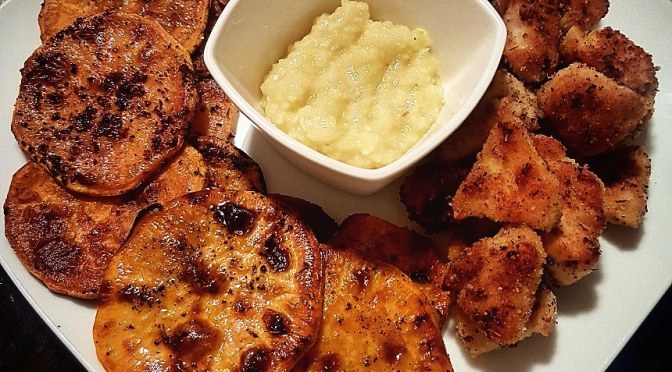Before adopting the AIP diet for your autoimmune disease (Hashimoto’s, Graves, Lupus, Celiac or others), you may wonder what this diet can do for you and your symptoms. In this article I’m going to explain the role of the diet and the allowed foods list in the simplest words and by real examples.
Ruxandra Cuna
First things first, what is the AIP diet?
The Autoimmune Paleo diet starts from the idea that most autoimmune diseases are caused by a leaky gut syndrome. In simple words, this can be explained as below.
By triggers like eating unhealthy foods, by stress and excesses, our gut is attacked by inflammations that create small holes in the membrane of the intestine and get toxins spread out into our immune system. This way, our immune system reacts to these toxins and starts attacking organs in our body, like in the examples below:
- it attacks thyroid in Hashimoto’s or Graves Disease
- it attacks small intestine in Celiac disease
- it attacks the immune system itself by Lupus
So the purpose of the AIP diet is to heal the inflammations, or holes in the gut and make it recover, to prevent these inflammations from leaking toxins into our immune system. But for this gut healing process to take place, the gut needs an initial recovery period, which is the 30 days (or even more) Reset Period, during which the AIP diet only allows anti-inflammatory foods. These specific foods are meant to heal the membrane of the gut and stop the autoimmune symptoms.
While it has ben proven that the AIP diet helps in most autoimmune conditions, there is also a slight possibility that it may not work in some cases, most likely because there are also other measures to take for healing autoimmune. These are a change of lifestyle with more rest, less stress and a gradual elimination of the triggers causing autoimmunity in general. But it’s definitely Worth trying, just considering that it’s such a healthy choice it can’t actually do harm to the body.
The AIP diet has two main phases:
- The 30 day Reset Phase-extended until up to 90 days if needed, or until symptoms improve considerably and antibody blood tests also back up the efficiency.
- The Re-introductions Phase – which follows right after the Reset Period and involves the gradual and careful re-introduction of the foods that have been banned in the 30-90 day Reset Phase.
Now let’s take the 1st phase separately, the Reset Phase, and see what we’re allowed to eat 🙂
The 30 days Reset Phase – Allowed and Banned Foods List
Like mentioned above, the 30 day Reset Phase may be extended to up to 90 days if the symptoms of your disease are not yet improved considerably, or if your antibody blood tests are not modified for the best.
I’ve been quite strict on my 30 days Reset Phase, making it 45 days Reset in my case, as I wanted to make sure I offer my gut enough time to heal by eating all organic and anti-inflammatory foods.
Here’s what you’re allowed to eat in the Reset Phase:
Meat (Grass fed or Organic)
| Pork | Lamb |
| Chicken | Goat |
| Offal (liver, heart, tongue, kidney) | Duck |
| Beef | Goose |
| Rabbit | Fish-Seafood (moderate for Hyper) |
Vegetables (Excluding Beans + Peas + Nightshades: tomatoes,
eggplants, peppers, potatoes)
| Sweet potato | Spinach | Brussel Sprout | Kale |
| Beets | Broccoli | Butternut Squash | Mushrooms |
| Radish | Red Onion | Lettuce | Carrots |
| Parsley | Pumpkin | Squash | Avocado |
| Celery + root | Parsnip | Okra | Bok Choy |
| Cauliflower | Cabbage | Zucchini | Leeks |
| Acorn Squash | Cucumber | Squash | Jicama |
| Artichoke | Fennel | Turnips | Endive |
| Asparagus | Green onion | Cassava | |
Healthy fats
| Olive oil (for salads) | Coconut oil (high temp cooking) |
| Avocado oil | Duck fat |
| Pork lard | Beef tallow |
Fruit (maximum 2 servings per day, non-tropical fruit
recommended)
| Apples | Pears | Berries |
| Bananas | Coconut | Pineapple |
| Mango | Plums | Melon |
Spices
| Basil | Turmenic | Chives |
| Garlic | Ginger | Dill |
| Cilantro | Salt | Rosemary |
Flour
| Coconut flour | Arrowroot powder |
| Cassava flour | Plantain flour |
| Tiger-nut flour | Tapioca flour |
Miscellaneous
| Gelatin (grass fed) | Tapioca pearls |
| Carob powder | Baking powder (gluten-free) |
Here’s what you’re not allowed to eat in the Reset Phase
Gluten and grains
| Wheat | Rice | Quinoa |
| Corn | Amaranth | Rye |
| Barley | Millet | Sorghum |
Dairy (only banned in the Reset Phase)
| Milk | Cheese |
| Yoghurt | Ghee |
| Butter | Cream |
Nightshades (only banned in the Reset Phase)
| Tomatoes | Eggplants |
| Potatoes | Peppers |
| Red spices | Ground cherries |
Legumes (only banned in the Reset Phase)
| Beans | Peas |
| Soy beans | Lentils |
All nuts and seeds (only banned in the Reset Phase)
| Sunflower | Peanuts | Walnuts |
| Coffee | Cocoa | Pumpkin |
| Hazelnuts | Almonds | Cashew |
Miscellaneous (only banned in the Reset Phase)
I will return shortly with the article on the 2nd phase of the diet, the re-introductions phase. Meanwhile, you can get inspiration from my daily recipes and start healing your autoimmunity. 🙂
The recipes I post on the blog are 100% AIP compliant, with special mention in case some ingredients may not be allowed in the Reset Phase, but are to be introduced in the Re-introductions phase. For example, if I use Eggs in a recipe, I will sure mention that Eggs are not allowed in the Reset Phase and suggest a replacing option for them, for example gelatin egg, which can be used in the Reset Phase.
Ruxandra Cuna
I hope the AIP foods list will help up at least as much as it helped me and I’m here to support you on your autoimmune healing journey with an open heart 🙂
You can refer to the comments section or to the AIP and Paleo Facebook page and group for any support in your autoimmune healing through AIP!
















